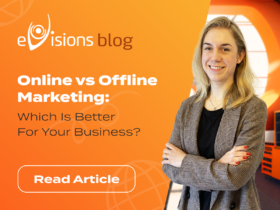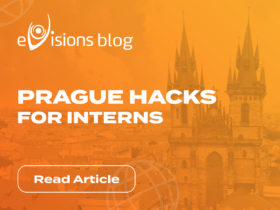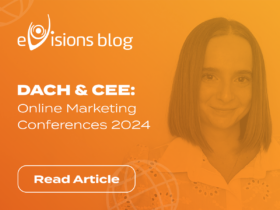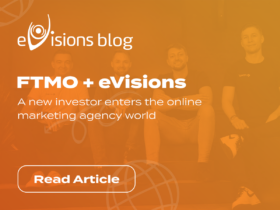Facebook advertising goals: Reach, Traffic or Conversion?
08. 12. 2021 AutorHave you also ever been stumped on what ad target to choose for your Facebook ads? Selecting a campaign objective is the first step you take when setting up ads in your accounts. But how much attention should you pay to these goals? How much of a difference will a campaign focused on Reach make…
Target selection is one of the most challenging parts of the whole process. If you’re new to Facebook ads, it might be tempting to avoid the difficult decision of determining a suitable target. However, understanding Facebook ad targeting is guaranteed to help you achieve better and more targeted results. So how do you choose the right campaign target that’s right for your business or client?
When you choose a campaign goal, Facebook analyses user data and shows your ads to the most likely people to take the action you want. Whether you want your audience to download an app, make an online purchase, or visit your store, Facebook chooses a target audience based on their past behaviour and will significantly help you connect with the right customers.
Facebook divides goals into three categories (with different options for each):
Awareness
Objectives at the top of the funnel (TOFU) are designed to generate interest in what you offer.
Considerations
Middle of the funnel (MOFU) targets people who want to learn more about your offers.
Conversion
Bottom of the funnel (BOFU) goals to increase purchases, registrations and visits.
From the categories above, you have to select the part of the customer journey that best matches the action you want your target audience to take.
Awareness
If you want to generate interest or expand your audience, you can choose from two awareness-raising objectives:
- Brand awareness
- Reach
Brand awareness
Use this goal to introduce your brand to a broader audience or raise awareness of your products and services. It’s the ideal choice when you need to pique the interest of a new audience or stay top of mind with current customers.
When you choose this goal, don’t expect your target audience to take further action. People who see your ads targeted at this goal are unlikely to click through to your website or make a purchase – at least not yet. Later on, you can show ads focused on Consideration or Conversion to a similar target audience to move interested customers further through your sales funnel.
Reach
To show your ads to as many people as possible in your target audience, use the “Reach” objective. As the name suggests, this campaign objective is designed to reach the maximum number of potential customers that your ad budget allows.
Reach allows you to adjust your impression frequency settings to get the most value from your ads. For example, if you’re running ads for a large, well-known company, running ads at a lower frequency will likely be sufficient to meet your goals. However, if your brand is new to the market, you may need to show your ads more frequently to ensure they stay in the minds of your customers for the long term.
Consideration
When you want your audience to become more familiar with your brand and offerings, you can choose one of six consideration goals:
- Traffic
- Expressed interest
- Application installation
- Video viewing
- Generating leads
- News
Traffic
Use Goal Traffic when your goal is to send your audience somewhere other than Facebook. For example, you can link to a blog post, podcast episode, landing page, or App. Suppose you have Facebook pixel installed on your website or App. In that case, you can track visitor activity and re-target the same Facebook users in future campaigns.
Facebook will show your ad to the people in your target audience who are most likely to click on your link, based on their past behaviour. However, they may not necessarily complete conversions, such as signing up for your mailing list or completing a purchase. To target these actions, you need to choose a Conversions campaign goal.
Expressed interest
If you want more people to interact with your ad, use the goal of Projected Interest. For example, this goal can encourage users to respond to, comment on, share, like or follow your Facebook page.
One of the most significant advantages of choosing this target is the possibility of generating additional Reach. The interest shown can increase organic Reach beyond the original audience. It can also help you build an audience that has already expressed interest in a post or product in some way in the past. You can use these audiences for re-targeting purposes for future ad campaigns.
Application installation
If you have an App and want to redirect customers to the App Store or Google Play, go to the App Installation goal. If you choose this campaign objective, you can target high-value customers to ensure the highest possible return on investment (ROI).
Video viewing
If you want your target audience to watch your brand’s video, choose the Video Viewing goal. With this objective, you can help customers get to know and understand your brand better, introduce your brand personality or highlight your unique selling point (USP).
This goal can also help you build an audience for future re-targeting purposes. For example, you can target people who have seen 25% or 75% of your video and may be more interested in your product.
Generating leads
Use the Lead Generation goal to collect customer data directly on Facebook. This type of ad allows you to capture information such as names, email addresses and phone numbers directly on the social network. The social media platform simplifies the process by automatically pre-populating users’ personal data when available.
Since you can customise your form for prospects, collecting even more specific data is possible. For example, you can ask multiple-choice questions, prompt users to write short answers, or invite them to request an appointment.
News
To start a conversation with your target audience, go to the News objective. This campaign objective allows you to connect with customers via Facebook Messenger, Instagram Direct or WhatsApp Business.
With this goal in mind, you can ask your target audience questions and encourage them to engage with your business. You can also generate leads and collect data about them.
Conversion
If you want your audience to make a purchase or visit your business, you can choose from three conversion goals:
- Conversion
- Sales from the catalogue
- Shop traffic
Conversion
Select a Conversion Goal if you want your target audience to click through to your website and complete an action, such as signing up for a list, adding payment details or making a purchase. You’ll need to install Facebook pixel and set up conversion events to track results.
While you can use this goal to drive particular actions, the Facebook Ads algorithm may have trouble serving your ad effectively if your website or App isn’t generating enough desired conversions. In general, you need at least one or two dozen conversions per week for this goal to work appropriately. If your site or App doesn’t meet the minimum, consider the Traffic goal instead.
If you select the Conversion goal, you can use the Facebook pixel data to create different custom audiences. For example, you can re-target users who entered their payment details but didn’t complete a purchase.
Sales from the catalogue
Use the Catalog Sales goal if you have an e-shop and want to promote products from your catalogue. To use this goal, you need to link your e-shop to Facebook Ads and create a product feed.
During the setup process, you can choose to advertise to new customers or re-target existing leads. You can also choose to target customers who have viewed but not purchased products or offer related products to customers who have already purchased from your brand. To further optimise your catalogue ads, you can add dynamic content.
Shop traffic
If you have multiple store locations and want to target potential customers in the area, use the Facebook Store Traffic ad target. You must add your store locations to Facebook Business Manager to use this goal.
This campaign goal allows your brand to generate more Traffic and drive sales across all locations. If your business has a single brick-and-mortar store, use the Reach objective to optimise your ads.
Real-Life example
So how much difference does optimising for different targets in your campaigns make? Choosing the right (or wrong) target to optimise on Facebook is one of the main determinants of the success and failure of your online social media performance. The differences between the results of different targeting can be significant.
For example, ads optimised for Reach have up to 6x more Reach to potential target audiences than ads optimised for Traffic (with the same size of target audiences and the same daily budget). This is also associated with a much stronger impression and a lower cost per thousand impressions. On the other hand, they will also have lower click-through rates, cost per landing page impression and frequency of impressions.
For comparison, we put two campaigns to the test – Campaign A and Campaign B. Both have identical settings (target group size, daily budget, graphic visuals, etc.). The only difference is that Campaign B is optimised for Reach and Campaign A for Traffic. You can compare the campaign results in the table below. Reach ads are great if you want almost anyone in your target audience to see them. Conversely, choose Traffic when your main goal is to get more people to your site, and there are no specific actions you want them to take. For example, suppose you have a blog post and want as many people as possible to read it, and page views are more valuable than blog subscriptions. In that case, Traffic is the obvious choice.
Final tip
If you’re hesitating between two Facebook ad objectives or optimisation options, feel free to try both and compare the results. Create two identical campaigns (each with a different type of optimisation) and let them run for a week. At the end of the week, identify the higher-performing one and pour the budget into the higher-performing ad.










Komentáře